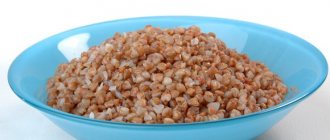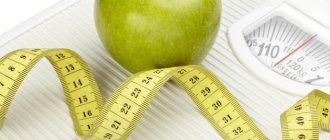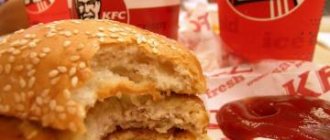Having embarked on the path of proper nutrition and weight loss, many limit themselves and sit on the hated chicken breasts with buckwheat and cucumbers. But in fact, a healthy diet includes a huge number of all kinds of foods. And even if you deviate a little from your diet plan and eat something that is not entirely healthy and healthy, it will not harm your weight loss in any way if you know how to count calories in your favorite dishes.
To ensure that your meals are always tasty and varied and at the same time help improve your figure, count calories and enter what you eat in a food diary. At first glance, it may seem boring and routine, but once you learn the simple techniques, you will realize that counting calories is much easier and simpler than all the diets in the world. After all, it will allow you to eat your favorite foods and still achieve results.
Why count calories in foods?
To lose weight once and for all, first of all, you need to learn a simple truth: we don’t get fat from any specific foods, potatoes or candies, we gain weight solely for one reason - a calorie surplus. When you eat more calories than you burn, you gain extra pounds. This is a basic law, and there is no escape from it.
This means that if you want to lose weight, you must burn more calories than you consume, creating what is called a “calorie deficit.”
How to do it?
The first way is to switch to low-calorie foods and live in a state of constant restrictions and prohibitions.
The second way is to calculate your calorie intake for weight loss and simply enter all the foods you eat into the counter, maintaining a certain balance of proteins, fats and carbohydrates.
The second path, although it seems more difficult at first glance, will actually lead you to your goal more quickly and make losing weight more tasty and comfortable.
Of course, when you start counting calories, you will encounter some difficulties. For example, you will come across products whose energy value will be quite difficult to determine. Kbju is always indicated on the packaging of all products in stores. But what if you come to visit and are treated to Olivier salad? What if you prepared your favorite borscht for the whole family? We'll tell you how to count calories in complex dishes, and what to do if you don't know the energy value of food. But first, some important tips.
First find out:
- How to calculate your daily calorie intake for weight loss
Plant products
It is no secret that, in aggregate, the least amount of calories is contained in vegetables, fruits and berries. So the energy value of fresh potatoes is 92 cal. When boiled, this vegetable has 74 kcal, and when fried - 183. French fries contain the most calories - up to 270 kcal. In regular cabbage, the energy value varies from 23 to 43 ccal, depending on the degree of ripeness. Brussels sprouts contain 52 kcal, and Peking cabbage - about 16. Sauerkraut has the least calories - 18, and stewed cabbage has the most (up to 74).

Other vegetables include: carrots – 37, onions – 41, zucchini – 23, eggplants – 24, cucumbers – 14, pumpkin – 25, bell peppers – 27, tomatoes – 23, dill – 32. The lowest-calorie fruits are: apple - 37, orange - 40, pear - 42. The least energy value is contained in citrus fruits such as lemon (33 ccal). Of the berries, the lowest calories are the following: cranberries - 26, blackberries - 31, strawberries - 34 and currants - 38. Fruits such as mango - 67 and banana - 89 have the highest energy value.
How to count calories correctly: 10 rules
To start counting calories you will need a kitchen scale and a food calorie table . It is very easy to carry out calculations in the modern world of gadgets. You just need to download a special program to your phone and enter data into it. The application itself will calculate for you how many calories, proteins, fats and carbohydrates you have eaten. You just have to be honest with yourself and follow simple rules.
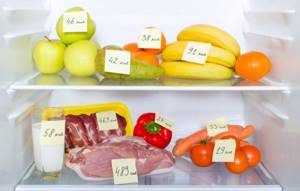
Calorie counting. Photo: Shutterstock
Rule #1
Don't fool yourself . Enter into the counter absolutely all the foods you eat. Don't forget that many drinks may contain more calories than the entire dessert. Sometimes we can grab a piece of chocolate from a friend on the go or take a sip of juice. It seems that nothing special will happen from this. However, in fact, it turns out that in this way you gained almost 500 extra calories per day.
№ 2
Do not taste food while cooking . Many housewives taste dishes while preparing their culinary masterpieces. And then they wonder where the extra weight comes from.
№ 3
the weight of the product into the counter in its raw form . This data will be the most accurate. In calorie counting programs, of course, you can find ready-made kbju products. They can also be used in a pinch, for example, if you are preparing a dish for the whole family. However, keep in mind that in this case you will have a large error in the calculations. Compare, for example: 100 grams of raw chicken fillet has 110 calories, and 100 grams of fried chicken fillet has 195.
№ 4
It is also better cereals and pasta dry before cooking . Do not forget that all products during heat treatment can both fry and evaporate, and absorb water, so their volume changes. For example, 100 grams of boiled buckwheat contains 120 calories, and 100 grams of dry buckwheat contains 343 calories.
№ 5
Weigh the fruit . Contrary to the myth that you can eat them as much as you want, they are actually quite high in calories and sugar. Therefore, they must be strictly taken into account in the diet.
In calorie counting programs, you can find approximate data for, for example, one medium banana or one medium apple. It is better not to use them, but to weigh the fruit yourself.
№ 6
When weighing a product , count only the edible part . For example, when you eat a banana, then take into account its weight without the peel, and when you eat a chicken leg, then enter into the counter only the weight of the meat without the pit. This is easy to do: first weigh the weight of a whole chicken leg. When you eat it, weigh the bones and skin separately, and then count the difference.
№ 7
Check the data on kbzhu , which are indicated in the calorie counting program, with the data on the packaging . Information in the counter is usually entered by the users themselves. And they are often inattentive.
№ 8
Do not use the prepared food data provided in the calorie counter . It’s one thing if you bought a ready-made salad in a store - in this case, you can trust the information on kbju on the packaging, because they always prepare it according to the same recipe. It's completely different when you use data on other users' prepared meals. When choosing, for example, “omelet with milk,” you do not know exactly how much milk the other person put in it.
This data can sometimes be used, but only in extreme cases. For example, when you ate at a party and don’t know how many ingredients the hostess put in the Olivier salad. In this case, you can rely on ready-made approximate data from the Internet. This will still give you an idea of the approximate calorie intake of your diet, but keep in mind that the information will have a large margin of error.
№ 9
Green vegetables (cucumbers, lettuce, etc.) do not need to be weighed or counted. They are extremely low in calories. Tea and coffee without sugar also have almost zero calories. However, if you add milk, sweeteners or anything else to your drinks, be sure to take this into account.
№ 10
The easiest way to calculate the kbju of a complex dish that you prepare at home is to simply weigh each ingredient separately and enter it into the calorie counter, which will add up all the data. If you are preparing a large dish for a family for several days, then you can calculate kbju per 100 grams . How to do this - read below.
How to calculate the calorie content of fried foods and dishes with added broth
Broths, if fat has been removed from them, usually contain:
- meat - 20 kcal per 100 ml
- fish - 15 kcal per 100 ml
- mushroom and vegetable - 5 kcal per 100 ml of finished product
That is, if we cook something and add broth instead of water, we take these numbers into account. Further, everything is the same as in the previous paragraph along the first path.
Now let's look at how to properly keep records for frying. When we fry something, we do it in oil, we must first weigh the oil that we put in the pan .
In principle, now there are non-stick pans - you don’t have to add oil or use cooking spray (minimum fat). You can cook on the grill, convection oven, in a slow cooker, and add oil to ready-made dishes.
By the way, if the oil does not undergo heat treatment, it will be of greater benefit to our body than fried. The fatty acids that it consists of will not disintegrate and we can use them in full.
When we fry, some of the oil is fried from the pan (remember kitchen surfaces splashed after frying). To account for this error, cooks use special coefficients.
- For meat and fish this will be a coefficient of 0.2
- For pancakes, zucchini, eggplant and donuts, the coefficient is 0.5
After summing the masses and calorie content of all ingredients (for example, butter + meat), we multiply the result by a coefficient.

100 grams of beef (187 kcal) + 20 g of butter (180 kcal) = 367 kcal
367*0.2 = 73.4 kcal.
367 - 73.4 = 293.6 calories in the finished piece of fried meat
Naturally, the finished piece will weigh less than 100 grams, since the water will evaporate from it.
How to Count Calories in Ready Meals: 6 Steps
Counting calories in a complex dish is actually not that difficult. You just need to figure it out once, and then follow this principle.
If you have some favorite dish that you always cook according to the same recipe with the same amount of ingredients, then you can count its kbju per 100 grams just once and enter the data into the counter. From now on, all you have to do is weigh the portion and enter it into the application, and then use the ready-made data. How simple!
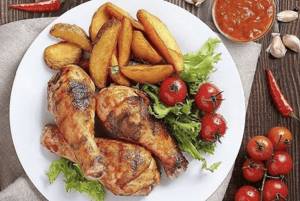
Favorite dish
To do this you only need to take a few steps:
Step 1
Weigh each ingredient individually and add it to your calorie counter. The program will calculate how many calories, proteins, fats and carbohydrates are in a dish. Write down this information.
Step 2
Before you start cooking, just in case, weigh the dishes where you will put all the food - a saucepan or frying pan. This is necessary so that the dish does not have to be shifted when weighing. All you have to do is weigh the dish and subtract the weight of the dishes - this way you will find out the weight of the product.
Step 3
Now you know how much your dish weighs. To find out the number of calories in 100 grams, divide the total calorie content by the weight of the dish , and then multiply the resulting amount by 100 .
Step 4
the same with the rest of the macros: proteins, fats and carbohydrates .
Step 5
After you have calculated the quantity of food per 100 grams, enter this data into the calorie counter .
Step 6
Now all you have to do is cut off a piece of the dish, weigh it and enter it into the counter . The program will automatically calculate the number of calories, proteins, fats and carbohydrates per serving.
Method for calculating total energy value.
Determine the amount of food consumed, for example for breakfast.
Then, based on the information provided on the product packaging (energy value per 100 g), calculate the amount of energy consumed per serving. For example, 100g of ham is 84 kcal, so 20g of ham is 17 kcal.
Thus, to calculate the energy value of breakfast, you need to perform the following calculation:
- 1 bun (50 g) = 150 kcal
- butter (5 g) = 74 kcal
- ham or turkey (20 g) = 17 kcal
- cheese (20 g) = 79 kcal;
- 1 medium tomato (130 g) = 26 kcal,
- coffee (1 cup - 130 ml) + milk 2% fat (10 ml) + sugar (1 teaspoon - 5 g) = 3 + 5 kcal + 20 kcal.
The energy estimates of the individual food components are added up to give you the number of calories you consume by eating your breakfast: 150 kcal + 74 kcal + 17 kcal + 79 kcal + 26 kcal + 3 kcal + 5 kcal + 20 kcal = 374 kcal.
An example of calculating the calorie content of a complex dish
Let's consider calculating kbju per 100 grams using the example of pumpkin casserole. We take pumpkin, eggs, flour, sweetener. We weigh each ingredient and enter it into the calorie counter.
The total calorie content of the dish turned out to be 829. At the same time, the whole casserole contains 26 grams of protein, 20 grams of fat and 165 grams of carbohydrates.
To find out the calorie content per 100 grams, you need to divide the total calorie content (829) by the total weight of the dish (774 grams), and then multiply the resulting figure by 100.
- 829:774x100=107 kcal
To find out the amount of protein in 100 grams, we divide the total amount of protein (26 grams) by the total weight of the dish (774) and multiply by 100.
- 26:774x100=3.3
To find out the amount of carbohydrates in 100 grams, we divide the total amount of carbohydrates (165) by the total weight and multiply by 100.
- 165:774x100=21
To find out the amount of fat in 100 grams, we divide the total amount of fat (20) by the total weight and multiply by 100.
- 20:774x100=2.5
It turns out that the kbju per 100 grams of pumpkin casserole is 107/3,3/2,5/21
Dairy
This group of nutrients is especially important for people actively involved in physical labor and sports. The energy value of milk products can vary from 57 to 1000 ccal. The fact is that they contain large amounts of whey protein and casein. The calorie content of kefir, depending on the degree of fat content, varies from 63 to 67 cal. Purified milk has 57 kcal, cow's milk - up to 70, goat's - up to 66. The energy value of sour cream also depends on the fat content. On average, this figure is in the range from 250 to 300 ccal. Cottage cheese has a calorie content from 84 to 250, and cheese - from 169 to 400.
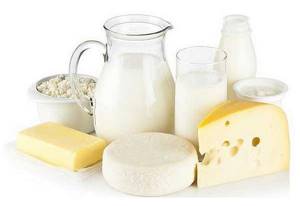
There is an opinion that cream is more harmful to the body than butter, but this is not true. 100 g of product contains up to 211 ccal. And low-fat cream has only 110 cal. In turn, the energy value of the oil can reach up to 930 cal. Margarine and mayonnaise are in the middle in terms of caloric content here - about 700 cal. The least energy value of dairy products is contained in yogurt - up to 65 cal.
Cereal products and products
In this case, the calorie content will depend on the type of grain. It should be noted that some bread products are useful even with strict diets. In any case, doctors do not recommend consuming large amounts of cereal product daily. Of the cereals, the ones with the lowest calorie content are: buckwheat - 349, semolina - 355, pearl barley - 358 and oatmeal - 380. As for cereals, the most useful, from a nutritional point of view, are: millet and rice - 329 and 351, respectively. The energy value of food products made from flour can vary from 110 to 700 cal. The calorie content of bagels ranges from 240 to 295. Buns, depending on the type and grinding of flour, range from 275 to 290 kcal. The remaining most popular culinary products have the following energy value: pasta - 344, crackers - 352, sugar - 355, bread - from 199 to 370. Nuts can be distinguished: peanuts - 632, almonds and pistachios - 638 each, hazelnuts - 655, hazelnuts – 706 and pine – 721.
What foods are the most calorie-dense (energy-intensive)?
Carbohydrate and fatty foods contain the most calories. Among them there are both useful and harmful representatives. For example, nuts have an average calorie content of 500-600 kcal, but they are “stuffed” with the nutrients our body needs. Especially Omega-3 fats. A hamburger has 2 times fewer calories, but almost all of them are useless.
- Carbohydrates and fats are the main suppliers of energy. Protein products are builders and digestion aids; their calorie content is usually lower.
- The “lightest” ones are vegetables, herbs, berries and fruits. At the same time, they are rich in fiber (necessary for digestion) and various minerals and vitamins.
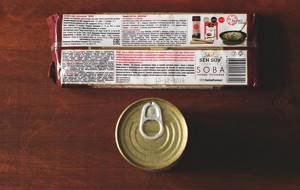
As a result, we get: for a proper and healthy diet, we need both high-calorie and non-calorie foods. The former provide energy, the latter help digest food. To avoid making a mistake in your choice, you need to read the product label. It indicates nutritional and energy value. By analyzing them, you can determine whether this companion is needed in your refrigerator? Healthy food is thoughtful and conscious.
